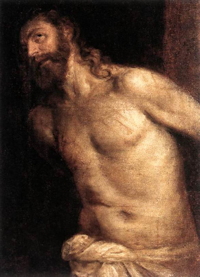Lent: March 16th
Friday of the Third Week of Lent
Other Commemorations: St. Heribert, Archbishop (RM); St. Jean Brebeuf, Priest and Martyr (RM)
Free eBook:
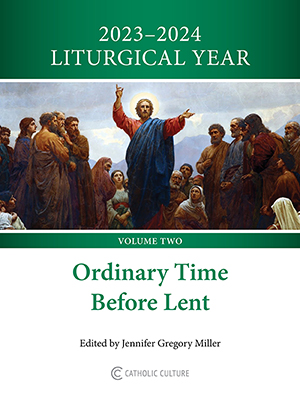
|
| Free eBook: Liturgical Year 2023-2024, Vol. 2 |
» Enjoy our Liturgical Seasons series of e-books!
"Do not be amazed at this, because the hour is coming in which all who are in the tombs will hear his voice and will come out, those who have done good deeds to the resurrection of life, but those who have done wicked deeds to the resurrection of condemnation (Jn. 5:28-29)."
Before the reform of the Roman Calendar this was the feast of St. John de Brefeuf. His feast has been transferred to October 19.
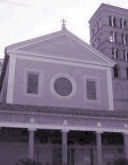
The Station today is at St. Lawrence's in Lucina. Near the church was a well which was very dear to the Romans and which probably suggested the Epistle and Gospel of today's Mass. The church also contains a part of the gridiron on which St. Laurence was burned. The Introit and Gradual refer to the prayers of the Saint while he was being tortured.
Meditation - The Tree of Knowledge and the Cross
The sin that was wrought through the tree was undone by the obedience of the tree, obedience to God whereby the Son of man was nailed to the tree, destroying the knowledge of evil, and bringing in and conferring the knowledge of good; and evil is disobedience to God, as obedience to God is good. And therefore the Word says through Isaiah the prophet, foretelling what was to come to pass in the future—for it was because they told the future that they were "prophets"—the Word says through him as follows: I refuse not, and do not gainsay, my back have I delivered to blows and my cheeks to buffets, and I have not turned away my face from the contumely of them that spat. [Is. 50, 6] So by obedience, whereby He obeyed unto death, hanging on the tree, He undid the old disobedience wrought in the tree. And because He is Himself the Word of God Almighty, who in His invisible form pervades us universally in the whole world, and encompasses both its length and breadth and height and depth—for by God's Word everything is disposed and administered—the Son of God was also crucified in these, imprinted in the form of a cross on the universe; for He had necessarily, in becoming visible, to bring to light the universality of His cross, in order to show openly through His visible form that activity of His: that it is He who makes bright the height, that is, what is in heaven, and holds the deep, which is in the bowels of the earth, and stretches forth and extends the length from East to West, navigating also the Northern parts and the breadth of the South, and calling in all the dispersed from all sides to the knowledge of the Father. — St. Irenaeus
Things to Do:
- Today's reading from the book of Isaiah declares that the fasting desired by the Lord is not so much denying oneself food (although this is important) but rather, consists in "Sharing your bread with the hungry, sheltering the oppressed and the homeless; / Clothing the naked when you see them, and not turning your back on your own." Many families take these words to heart by having an inexpensive, penitential dinner on Fridays in Lent (such as beans and rice) and then giving the extra money to the poor.
- Many families give each child one pretzel during Friday dinners in Lent. Remind your children of the spiritual significance of the pretzel.
- Pray the Stations of the Cross today with your family. An excellent version with beautiful meditations composed by our Holy Father is his Stations of the Cross at the Colosseum. Some other recommended versions are: Eucharistic Stations of the Cross, and the more traditional Stations of the Cross written by Saint Alphonsus Liguori can be found in most Catholic bookstores. Here are some guidelines for praying the Stations of the Cross in your home.
- Any of the linked activities (Fun Pretzel Project, Lenten Scrapbook, Candelabrum for Stations of the Cross) are a perfect way for your children to spend their Friday afternoons throughout this season of Lent.
Saint Heribert
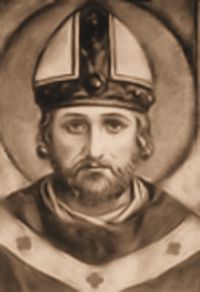 Heribert was born in Worms and he was the son of Hugo, count of Worms. He was educated in the school of Worms Cathedral and at the Benedictine Gorze Abbey in Lorraine, France. He returned to Worms Cathedral to be provost and was ordained a priest in 994.
Heribert was born in Worms and he was the son of Hugo, count of Worms. He was educated in the school of Worms Cathedral and at the Benedictine Gorze Abbey in Lorraine, France. He returned to Worms Cathedral to be provost and was ordained a priest in 994.
In the same year, Otto III appointed him chancellor for Italy and four years later also for Germany, a position which he held until Otto's death on 23 January 1002. Heribert was made an archbishop of Cologne on 998. Then, he also served Emperor St. Henry.
Heribert built the monastery of Deutz, on the Rhine and performed miracles, including ending a drought. He is thus invoked for rains.
He died in Cologne on March 16, 1021 and was buried at Deutz.
He was already honored as a saint during his lifetime and was canonized by Pope St. Gregory VII about 1074.
—©Evangelizo.org
Patronage: against drought; for rain; Deutz, Germany
Symbols and Representation: archbishop calling down rain by his prayers; man kneeling before Saint Henry II; episcopal attire
Highlights and Things to Do:
- Read more about St. Heribert:
- Watch this short video from gloria.tv on St. Heribert of Cologne.
- His relics were relocated from Old St. Heribert to the Neu-St.Heribert church in Köln-Deutz.
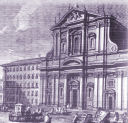
Saturday of the Fourth Week of Lent
Station with San Nicola in Carcere (St. Nicholas in Prison):
Today's Station is at St. Nicholas of Barin in Prison, dedicated to the popular St. Nicholas of Myra or also referred to as St. Nicholas of Bari, whose feast is December 6. It was constructed in the ruins of two temples and the ancient Forum Olitorium, with visible fragments from the ruins reused in the church. The most important of the temples was the Temple of Piety, built by Acilius Glabrius, consul in 191 B.C. The dedication to St. Nicholas was made by the Greek population in the area.
For more on San Nicola in Carcere, see:
For further information on the Station Churches, see The Stational Church.




